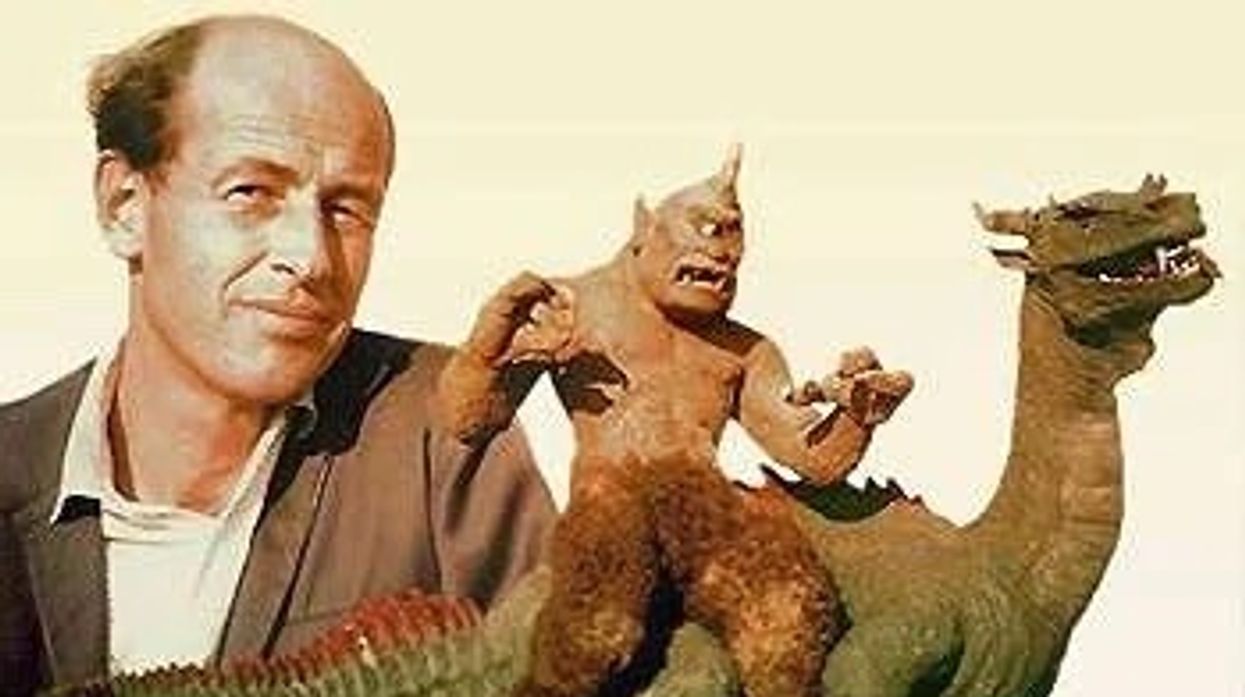Why Is Ray Harryhausen’s Stop-Motion Animation in Live Action Films Still Impressive?
CGI is cool, but have you ever considered using stop-motion in your film?

There is something charming about stop-motion animation. Stop-motion has the power to bring our imagination to the screen through detailed movements and hand-crafted models, which might make it the most human, personal, and heartfelt type of filmmaking. It’s special to see the creative spirit come to life in 24 frames per second, especially when stop-motion enters live-action.
With Marcel the Shell with Shoes Onwarming our hearts by using stop-motion to blend the wholesome creature into the real world, we wonder why stop-motion has fallen out of favor with filmmakers even though it has such a powerful effect on the viewers. Of course, realism is favorable, but stop-motion in live-action films can present stories in an awe-inspiring way similar to the animation of Who Framed Roger Rabbitor Cool World.
Old-school classics like King Kongand the creature-filled fantasy combined live-action and stop-motion, and The Royal Ocean Film Society breaks down exactly how stop-motion pioneer Ray Harryhausen created his most memorable sequences through Dynamtion and the desire to push the boundaries of what was possible at the time. You can watch the full video here.
What Is Dynamation?
Dynamation is the technique pioneered by animator Ray Harryhausen. The process involves a sandwiched composite of rear-projected footage, an animation table, a matte glass layer, and a 35mm camera. The projector used is modified to play one frame at a time, allowing him to move the stop motion model every so slightly in the frame.
The idea behind Dynamation was to integrate stop-motion into the footage in a believable way. Cross-cuts between a creature and the shrieking masses can only be done so many times before it becomes boring. By using multiple layers to create the illusion of a creature emerging from the water behind some crates, Harryhausen brought a level of depth that had never been seen before.

Stop-Motion Interacting with Reality
Harryhausen’s process was slow and methodical, often being handled solely by Harryhausen. He pushed the boundaries of what was possible with stop-motion in live action, encouraging productions to have characters interacting with the creatures to blend the two mediums.
To make these interactions believable, actors would be lifted by wires, and Harryhausen would fill out the animation by replacing the actors’ contact points with animated parts. You can easily spot this switch from real to animated if you go frame by frame or watch Harryhausen’s earlier work, but the animation became more fluid and hardly recognizable as he developed the craft.
One of the hardest contact points to spot is in the skeleton fight sequence in Jason and the Argonauts. As the swords clash together, the sword quickly changes into a model and then back to a normal sword. At normal speed, the quick animation is hardly noticeable. This is due to Harryhausen's ability to cleverly seal the layers of reality and stop-motion together and suspend our disbelief for a brief moment.
As on-set rigging became more complex, Harryhausen was able to find creative ways to integrate stop-motion models. As technology advanced, more films moved away from the wide static shots of stop-motion creatures’ interaction with live-action to embrace dynamic camera movements and compositions with more depth. Harryhausen embraced the advances of technology as well, finding ways to make his model's movements more subtle and eerie.
Harryhausen’s creations were beautiful, but he inevitably faced limitations that were out of his control. In his memoir, An Animated Life, Harryhausen said, “When designing such a creature, I always have to ask myself, ‘Can I put this on the screen?’ If I had no such limitations, my imagination would run riot, but in the end, it is time and money that dictates practicality…”
As we have recently seen with the VFX artists who work for Marvel, tight deadlines can limit an artist's ability to create great visual effects. If the time allotted to the visual effects artists is short, then the work created will not look good. That is not the artists’ fault. They produce the best work they can with the limitations presented.

Stop-motion will always be in a state of evolution. Dynamic camera movements and complex wire work can push the boundaries of what is possible in stop-motion if the artists are given the proper amount of time and budget to develop these intricate and highly detailed movements. It’s our duty as filmmakers to embrace the unique mediums of art that can integrate into live-action to add another layer of depth to the visual storytelling.
Harryhausen's goal with his stop-motion was to open up the possibilities of filmmaking for those who haven’t experienced certain mediums of the craft. Some great stop-motion artists are creating incredible shorts today, but it would be great to see stop-motion combined with live-action make a comeback in cinema. It would be a welcoming breath of creativity that could spark the imaginations of the next generation.
What is your favorite live-action film that uses stop-motion? Let us know in the comments below!
Source: The Royal Ocean Film Society











